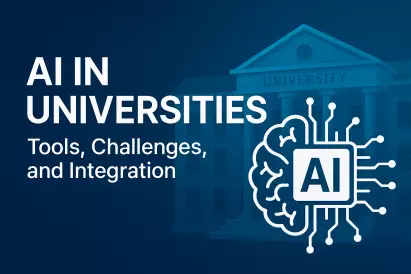Summary: This article discusses the evolving master’s education landscape in Serbia in 2025, highlighting labor market trends, curriculum shifts, and digital transformation. It also examines challenges such as funding, industry alignment, and accreditation, while exploring strategic opportunities for students, institutions, and employers.
Serbia’s Master’s Degrees in a Changing Economic Landscape
By 2025, Serbia’s master’s programs are adapting to a dynamic economic context, characterized by rising employment, shrinking unemployment rates, and the need to align academic outcomes with market demands.
With an employment rate of 51.4% and unemployment down to 9.1%, employers now face challenges in recruiting skilled labor, leading to competitive compensation and intensive recruitment efforts.
Approximately 30,000 new university graduates enter the Serbian labor force annually, including professionals from disciplines like economics and engineering.
Despite the increasing talent pool, inefficiencies like skill mismatches persist, prompting policy changes such as new immigration laws that attract foreign professionals to balance local gaps.
Trending Fields and Study Preferences in 2025
Master’s degrees in Serbia are witnessing growing enrollment in areas aligned with digital transformation and global economic integration.
High-demand programs include data science, business economics, informatics, and digital technologies. Technical fields now produce over a third of total graduate numbers owing to compatibility with international industry standards.
Programs blending disciplines—such as combining project management and innovation—are particularly attractive because of their versatility in the labor market. Meanwhile, fields like humanities and social sciences are facing competition but maintain relevance in niches like cultural industries management.
Rise of Interdisciplinary and Flexible Learning Models
Serbian universities are increasingly adopting interdisciplinary structures that bring together business, technology, and applied sciences. The concept of dual education—merging academic learning with practical work experience—is instrumental in developing job-ready graduates. Initiatives aiming to bridge the education-labor market divide are reshaping how programs are conceptualized and delivered.
Flexible delivery formats are now key differentiators for Serbian programs, often tailoring content for specific talent needs, like those found in human resources management or supply chain sectors.
Digitalization of Master’s Education in Serbia
Since the COVID-19 pandemic, there has been a strong shift toward hybrid and online education formats. By 2025, hybrid master’s programs that blend online platforms with periodic in-person engagement have become standard. Digital MBAs and other interactive formats meet student expectations around flexibility and engagement.
These innovations reflect broader trends in education, especially in domains like digital marketing, where interactive learning environments simulate real-world challenges.
International Standards and Global Recognition
Master’s programs in Serbia are evolving to meet international standards, often featuring bilingual delivery in Serbian and English. Aligning curricula with the European Higher Education Area makes Serbian degrees more portable, improving graduate mobility and attracting international talent.
Collaborations with foreign institutions and compliance with global frameworks ensure that Serbian degrees in fields such as international business law are recognized across borders and industries.
Affordability, Scholarships, and Enrollment Access
Affordability remains a strong selling point for Serbia’s master’s degrees, especially compared to tuition fees in Western Europe. This cost advantage supports international and domestic student interest. However, scholarship availability is limited, increasing competition for financial aid.
Innovative financing, including employer-sponsored programs, is emerging as a feasible alternative. Sectors struggling with talent shortages, including energy and natural resources, are increasingly leveraging private funding to attract and develop workforce-ready graduates.
Challenges Confronting Master’s Degree Programs
Despite progress, obstacles remain. Challenges around tuition funding, program branding, and regional disparities create enrollment barriers. Moreover, mismatches between academic content and evolving job roles hinder immediate employability.
Accreditation mechanisms must be modernized to ensure new interdisciplinary and private sector-backed programs maintain quality. Fields like quality management especially benefit from tighter regulatory oversight. Traditional institutions also face difficulties in updating curricula to meet rapid technological shifts, calling for more agile program development.
Opportunities Ahead: Strategic Directions for Reform
Several strategic reforms can magnify the impact of Serbia’s master’s education. Work-based learning—through internships and employer partnerships—can significantly improve job placement outcomes. Interdisciplinary and modular programs offer tailored flexibility in today’s evolving job environment.
Other priorities include streamlining accreditation for innovative coursework and expanding funding mechanisms. Graduate support services like career development offices and alumni mentorships will also play a vital role in improving labor market transition for master’s students in programs such as general management.
Impact on Students, Employers, and the National Economy
For students, Serbia in 2025 offers a master’s education system that supports diverse, high-quality and flexible learning suited to a global labor market. Employers benefit from stronger connections with universities that allow customized training paths and better recruitment channels.
The broader economy is poised to gain through a more competitive talent pipeline, innovation-rich educational models, and increased compatibility with Europe-wide systems. In a world where borders are increasingly permeable for talent and knowledge, Serbia’s evolving education ecosystem is set to make a significant contribution to workforce development and national growth.



